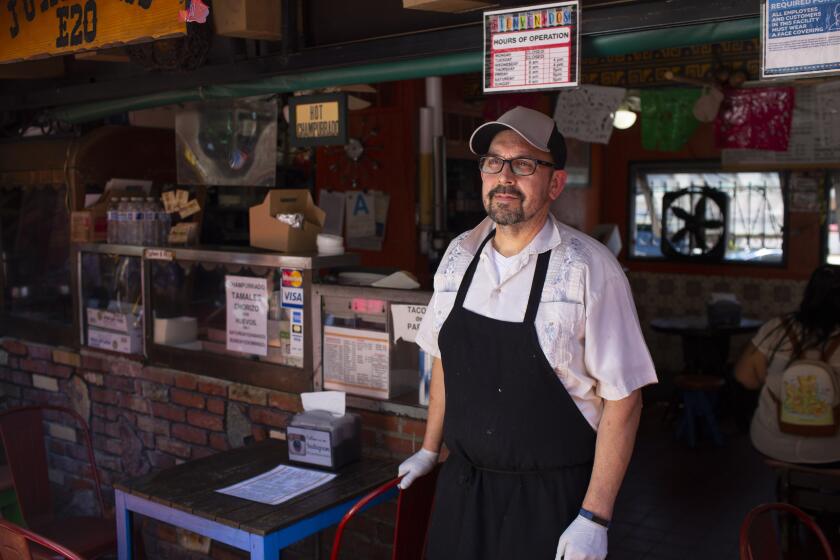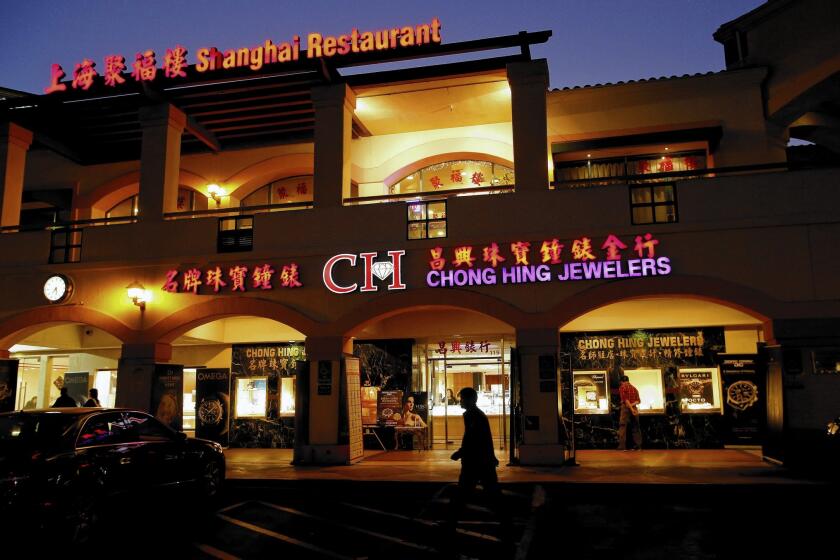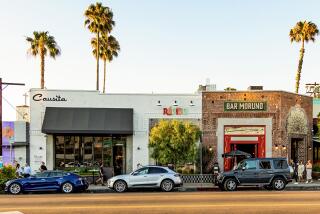Valley Boulevard, L.A.’s Chinese main street, was a ghost town in 2020. Can it bounce back?
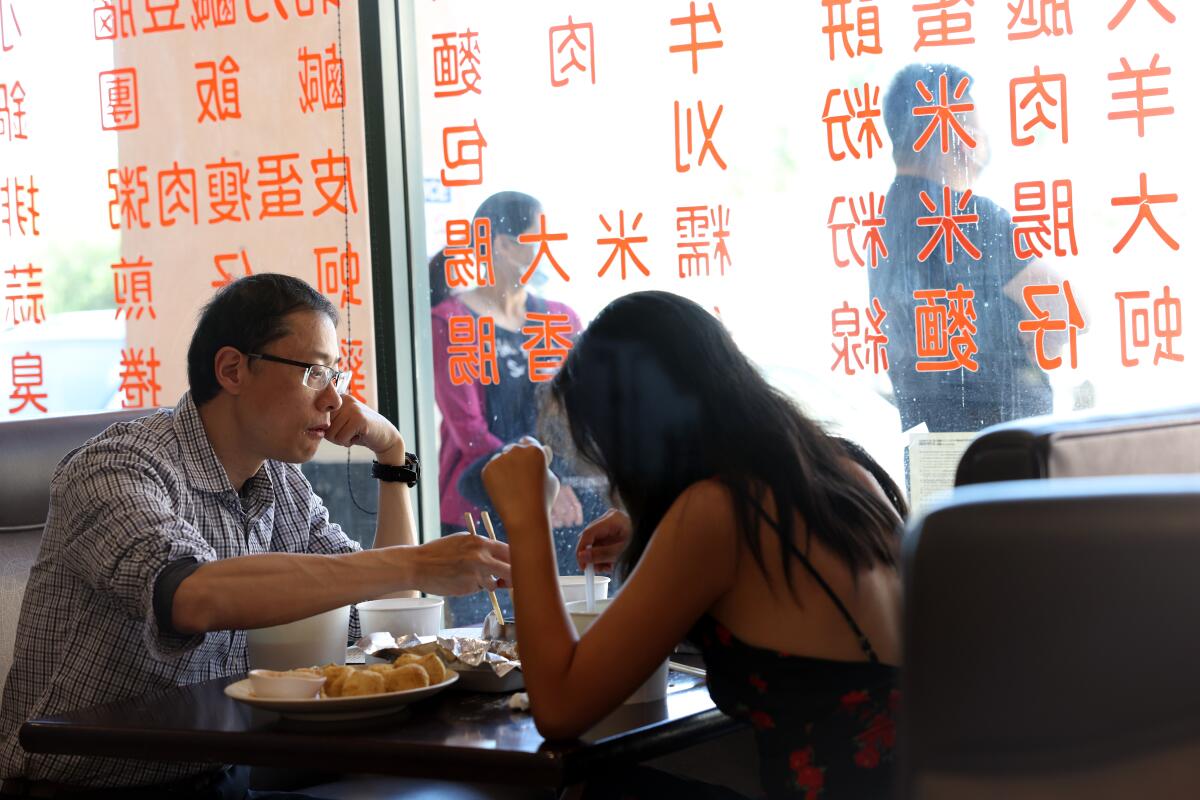
- Share via
As California prepared to fully reopen, business at YungHo, a Taiwanese breakfast cafe on Valley Boulevard in San Gabriel, was almost back to normal.
Customers streamed in to pick up fried turnip cakes, rice porridge and youtiao, a churro-like fried dough, to go. A science teacher placed a large order of black sesame mochi and warm soy milk to celebrate her last Zoom class.
But the phone constantly rang with people asking questions that hinted at the upheaval of the last year: “Are you open for indoor dining?” “What items are still on the menu?”
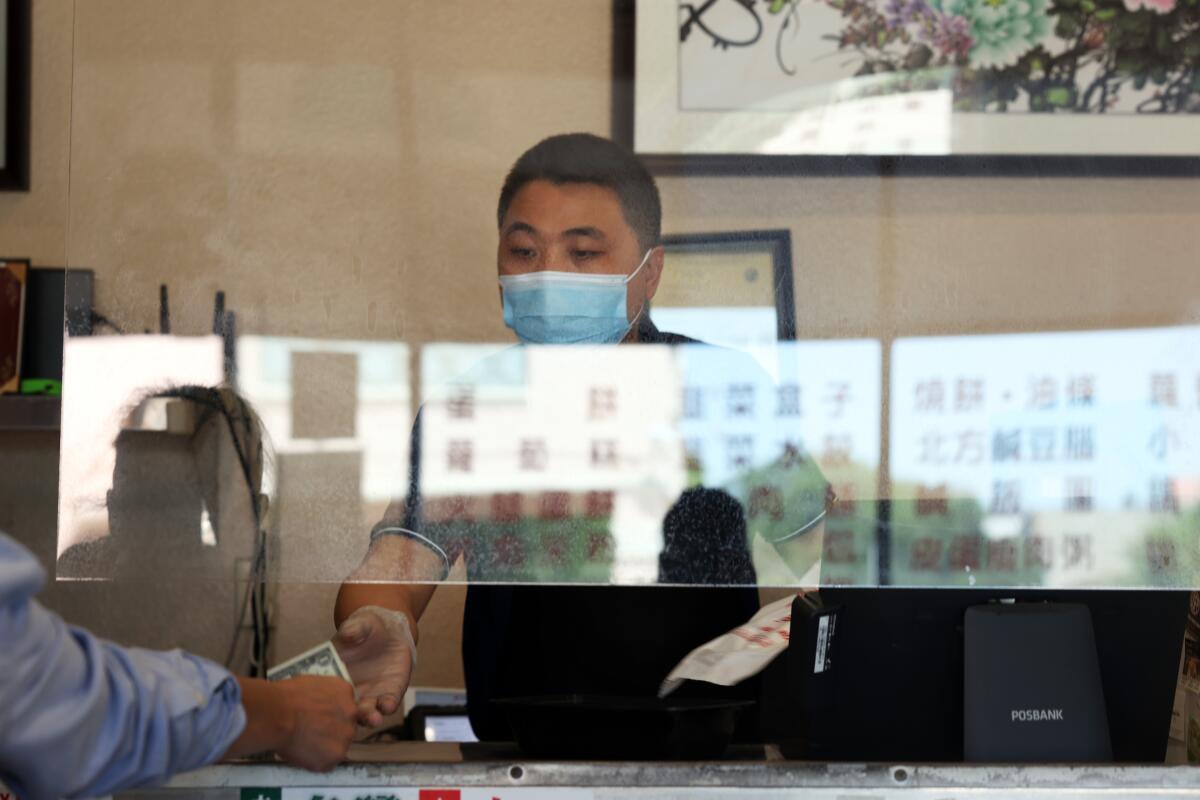
In the early days of the COVID-19 pandemic, Valley Boulevard was a “complete ghost town,” the cafe’s manager, Andrew Zhang, recalled.
As vaccinations picked up and case counts dropped, Valley slowly came back to life. Locals started to gravitate back to their favorite noodle eatery or dim sum diner.
The state’s reopening on Tuesday is further cause for optimism. But it is far from certain whether Valley will regain its old bustle and sense of possibility. And the boulevard will emerge in a new form altered by the pandemic, with some changes, such as stricter hygiene standards and a reliance on delivery apps, likely here to stay.
This stretch of Valley Boulevard has long been a mecca of Chinese dining and shopping, a place to find hand-pulled Xian noodles, tongue-numbing Sichuan boiled fish, traditional herbal medicines and the latest trends in boba tea.
It is the heart of Southern California’s suburban Chinatown, at once quintessentially Los Angeles and intimately connected to Asia, continually evolving as new immigrants bring fresh ideas.
From Alhambra in the west to Rosemead in the east, closed storefronts on Valley Boulevard are a reminder of what has been lost in the pandemic. It has never been easy for businesses to stay afloat here, under pressure to keep prices low in an area densely packed with competitors. Adaptation has always been a watchword.
During the dark days of 2020, immigrant entrepreneurs saw their American dreams bleed away. Restaurant workers, barely getting by on low salaries, lost their jobs, and some returned to their native countries. Language barriers and lack of know-how made it difficult for minority-owned businesses to navigate red tape and obtain government pandemic help such as federal paycheck protection loans.
The anxiety in the San Gabriel Valley, on the eve of the state’s reopening, is playing out in immigrant-rich retail districts across the region, from Whittier Boulevard in East L.A. to Little Tokyo downtown. Customers are back, but not at pre-pandemic levels. Businesses here are interconnected, with people trekking from a distance for, say, dim sum, then staying to shop or grab coffee.
How much that consumer cycle will bounce back is unclear.
“It’s been a tough and challenging year — fear, anxiety, that all of you have worked through, is not lost on any of us,” Gov. Gavin Newsom said Monday at a news conference in San Francisco. “We recognize ... our responsibility not just to be here today and tomorrow but as we recover as a state, mindful about the disparities that persist in the state, mindful of our responsibility to support our small businesses and get our hospitality and tourism industry back on its feet.”
At YungHo during the height of the pandemic, Zhang and another employee drove as far as Diamond Bar and Riverside to drop off food, at no extra charge. They just wanted to keep the kitchen going.
Taiwanese breakfast is typically savored at a cafe table. Youtiao loses its airy crunch in minutes. But customers, still wanting to start their days with the familiar tastes, put in takeout and delivery orders. Now, dine-in business is returning.
“Last spring, you know, we were thinking we could lose our jobs if we don’t try hard,” Zhang said. “We always need to serve the people.”
A data analysis found businesses received PPP loans at higher rates in majority-white communities than in those in areas with Latino, Black or Asian majorities.
Other restaurants innovated, too, said David Chan, an L.A. attorney and food historian who has eaten at more than 7,700 Chinese restaurants, many in the San Gabriel Valley.
Hot pot restaurants created to-go kits, hoping that customers would prepare the boiling soup and raw ingredients at home.
To boost revenue, eateries sold pandemic-related non-perishables such as masks, face shields and hand sanitizers. They stopped accepting credit cards, to save money on the fees.
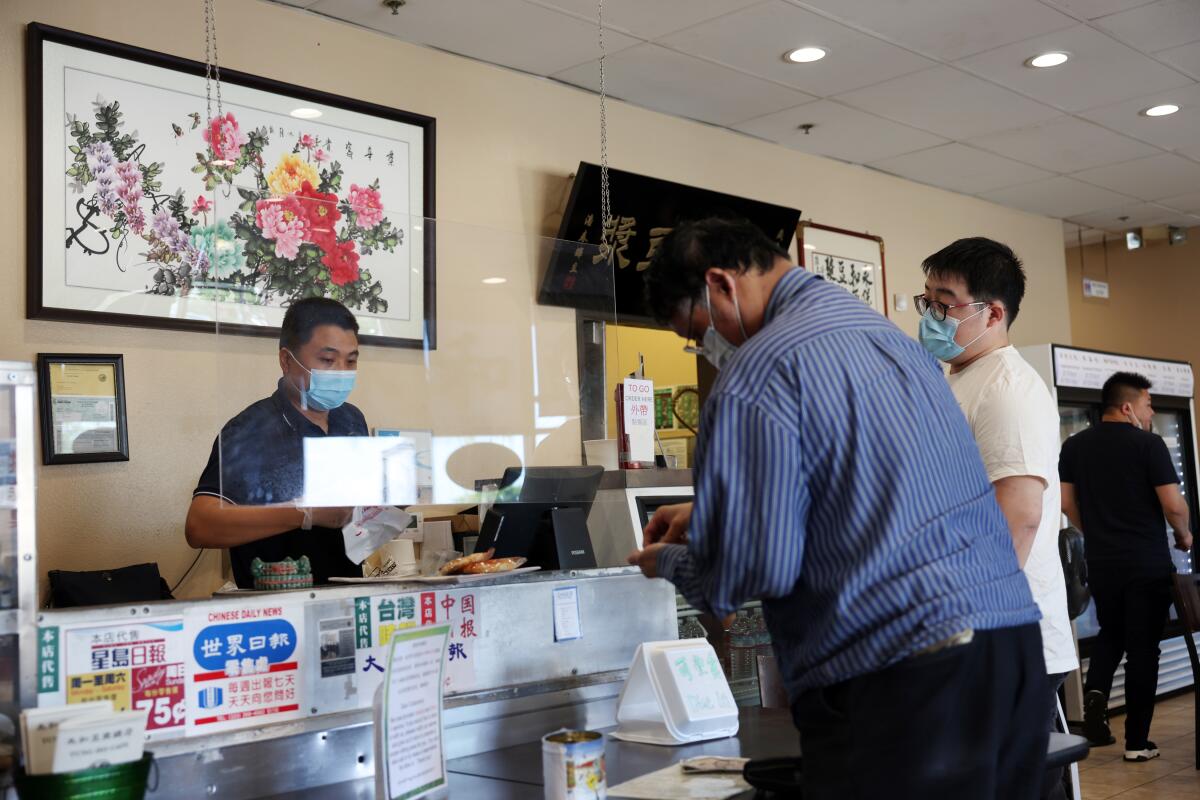
“They can’t stay with the same habits and have awakened to new demands,” Chan said.
David Chan, an L.A. attorney, will try any Chinese restaurant once and has the spreadsheet to prove it. He has become a go-to expert for critics.
Some people familiar with Valley Boulevard say the shadow of anti-Asian violence, which increased during the pandemic, is perceptible and may be keeping customers away.
“There’s a lot of pressure in society, and there can be a lot of danger,” said Maple Yuan, manager of Banh Mi Che Cali on Valley Boulevard in Rosemead. “But we try to focus on what we know and what customers demand — good food, good prices and cleanliness.”
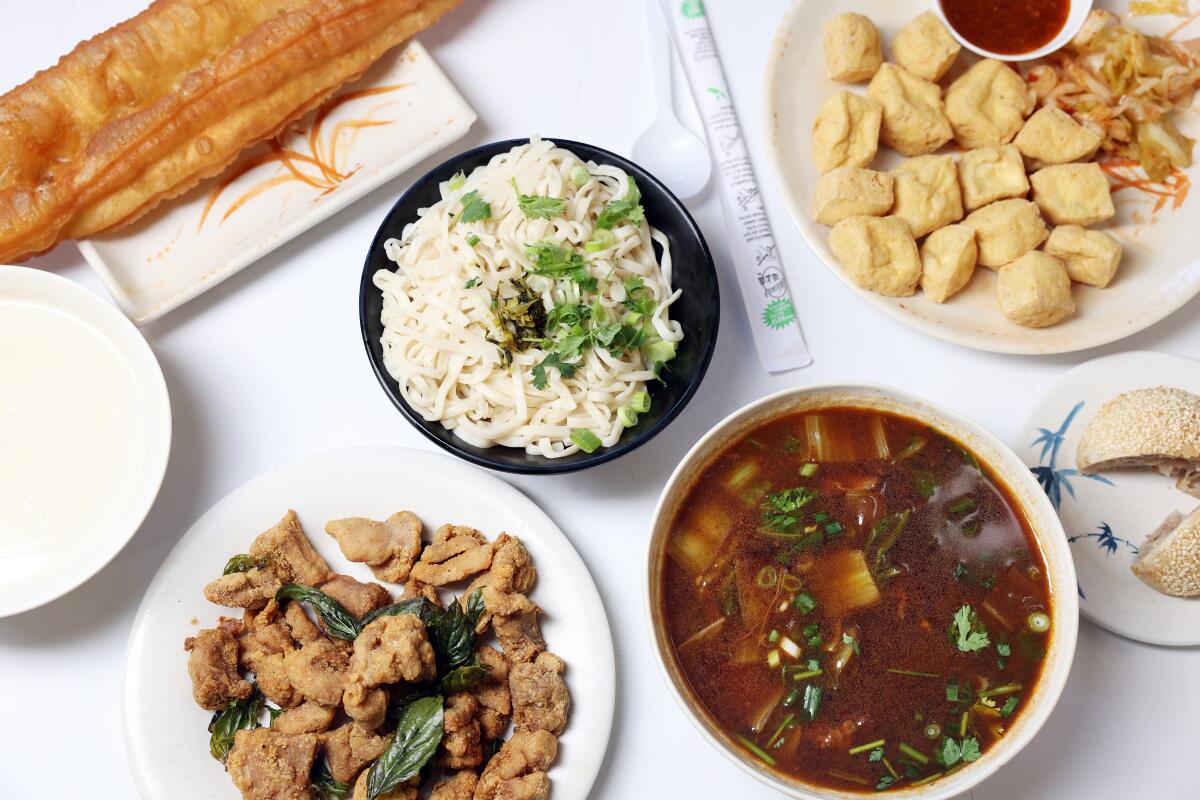
During the pandemic, Yuan slashed her staff of 30 nearly in half, opening later and closing earlier.
Business is now on the rise. On a recent day, customers grabbed canisters of Vietnamese vermicelli with crab, tomato and broth to go, along with crunchy egg rolls and baguette sandwiches selling for $3.75 to $5.25.
As the crowd showed, Valley Boulevard has expanded beyond its Chinese and Taiwanese roots. There were Korean American students eating on a budget, Filipino nurses getting dinner for their night shifts and two Vietnamese sisters translating ingredients for a Latino couple buying desserts.
The hand-sanitizing stations in front of the cash registers may become a permanent fixture.
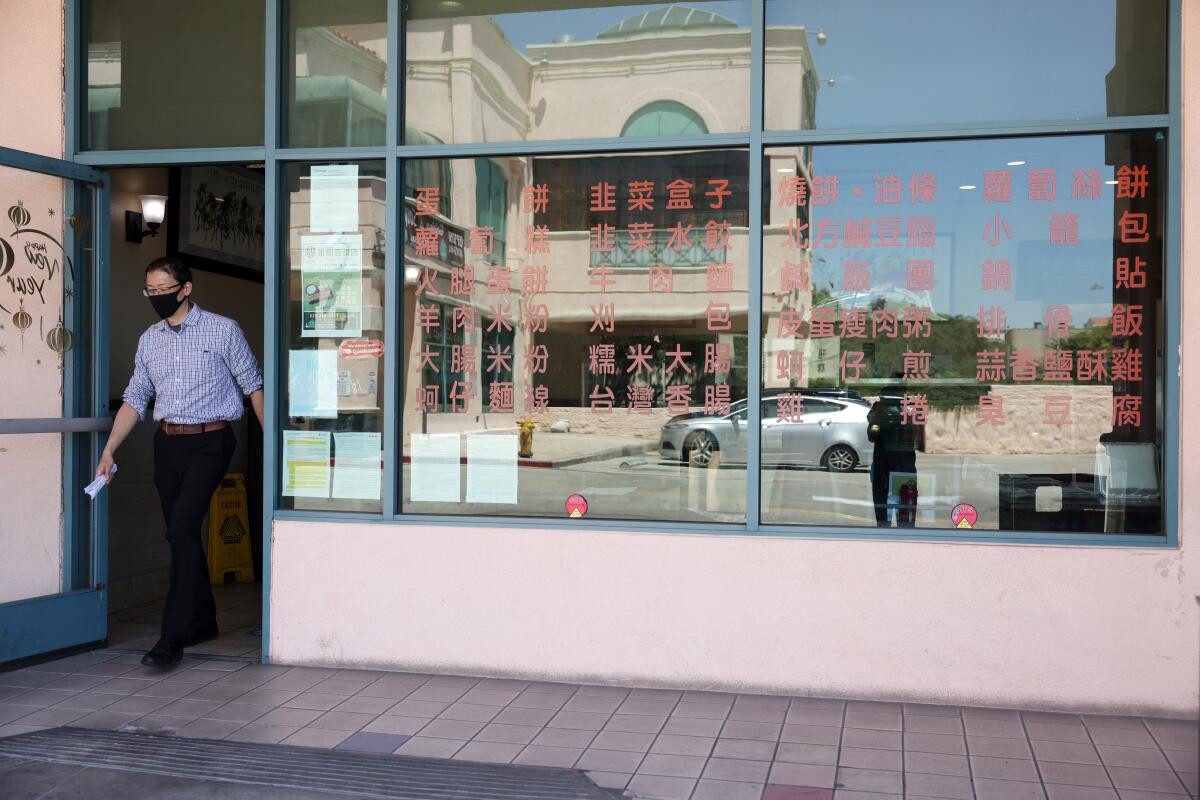
People have become “pickier” during the pandemic, Yuan said. “They review each item — how it was wrapped, how it was packaged. They ask themselves: ‘Does it look clean?’”
With many restaurants packed into strip malls, outdoor dining has been slow to catch on in some parts of Valley Boulevard.
But Joz Wang, a marketing consultant whose family has owned property in Alhambra for 45 years, said eating al fresco is a habit in Asia that could gain a foothold here, along with the late-night snacks already offered at some cafes.
“We really come to see how Valley is resilient, how the same space you’ve always known is reinventing itself,” Wang said.
At Shanghai restaurant, plastic takeout bags filled with red-cooked pork belly and steamed buns sat on an empty table, outnumbering the lunchtime diners.
That trend will probably continue, said manager Jensen Zheng.
The restaurant, in San Gabriel Square, a landmark mall on Valley Boulevard anchored by a 99 Ranch supermarket, contracts not just with Uber Eats and Postmates but with Asian-inspired providers such as Chowbus, HungryPanda and Fantuan.
“It has been a ghost town for months and it’s been very, very worrying ... we changed our attention to takeout,” Zheng said.
Valley Boulevard draws Asian Americans from throughout the region as well as international tourists. That traffic from outside the area came to a near-halt during the pandemic, said Michael Lin, who started a San Gabriel Valley food tour for Six Taste tour company.
“The area will definitely thrive again. And the restaurants that are flexible and can adapt to outdoors dining and takeout and third-party delivery apps will make it, even with state and county regulations changing,” Lin said. “But some of the mom-and-pop places may not make it, since they may not be as in touch with technology, or don’t have a large enough staff to manage all the changes.”
San Gabriel’s growing reputation for Chinese food and services has made it a destination for visitors from China, boosting revenue for the city and creating some hassles for residents.
Some people are still not comfortable eating indoors, so restaurants will have to fill outdoor seating areas or otherwise find new ways to entice customers, said Lin, who is Taiwanese American.
“The one sign that things have not returned to normal is you can find parking right away,” he said of San Gabriel Square.
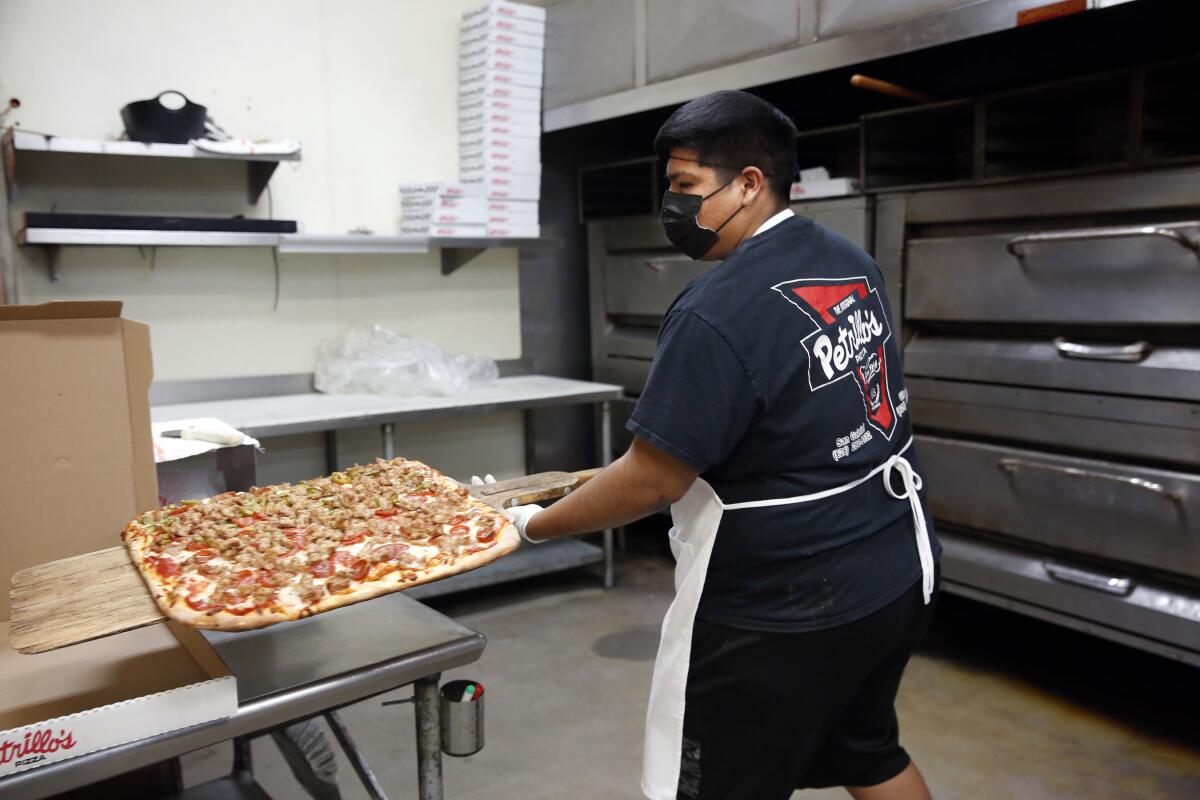
Since Petrillo’s opened 67 years ago on Valley Boulevard east of San Gabriel Boulevard, the area’s population has evolved from mostly white to mainly Asian and Latino.
Petrillo’s co-founder Norbert Lighthouse still owns the Italian pizza parlor. His sons and a daughter-in-law run it.
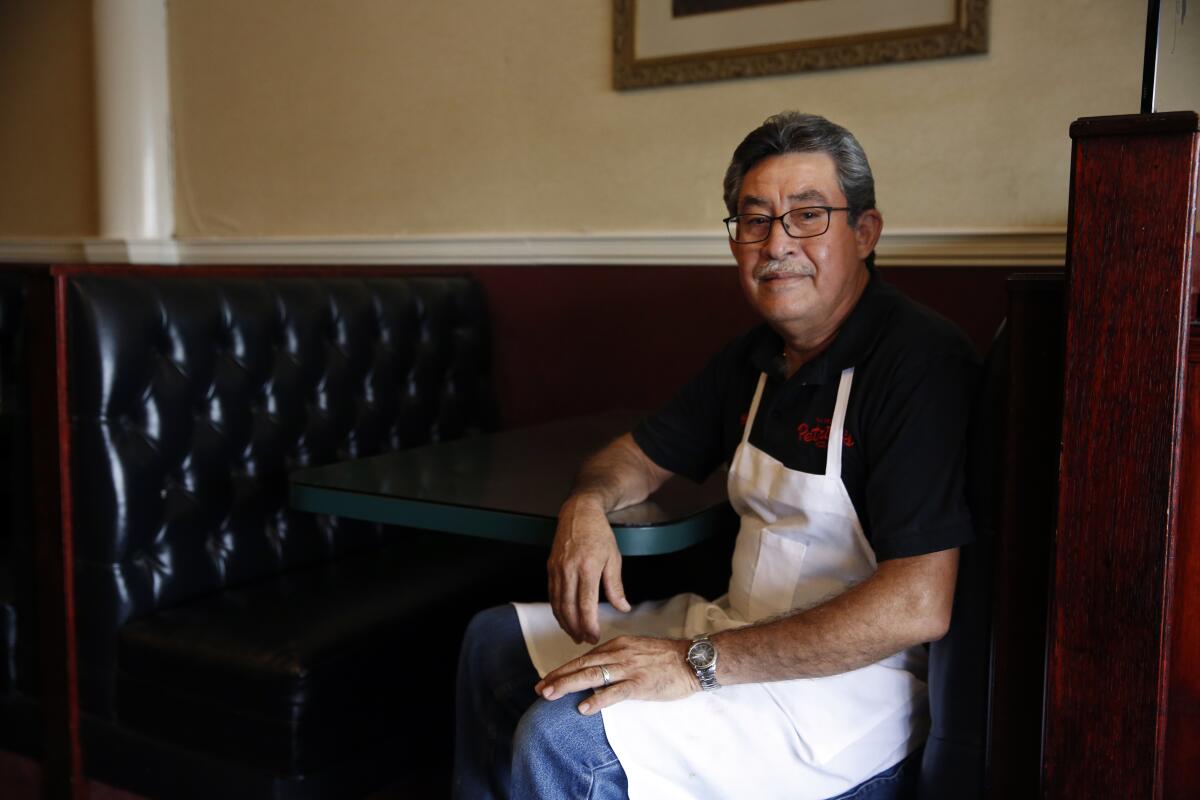
Takeout was already thriving before the pandemic, so Petrillo’s continued to churn out its pizza special loaded with salami, pepperoni, bell peppers, mushrooms, onions and sausage.
But the restaurant’s longtime role as a spot for wedding banquets, graduation parties and communal Dodgers viewing has been on hold. The hair salon next door closed. A neighboring flower shop has struggled to get orders, and a travel agency has yet to reopen.
Still, the worst may be over for Valley Boulevard, said Helen Lighthouse, Norbert Lighthouse’s daughter-in-law.
“There’s so much hope on the street. You heard the words ‘ghost town’ all the time in the pandemic,” she said. “But people seek comfort in the familiar. They’re working to return to normal or a new type of normal, and we will bounce back.”
Times staff writer Priscella Vega contributed to this report.
More to Read
Sign up for Essential California
The most important California stories and recommendations in your inbox every morning.
You may occasionally receive promotional content from the Los Angeles Times.

